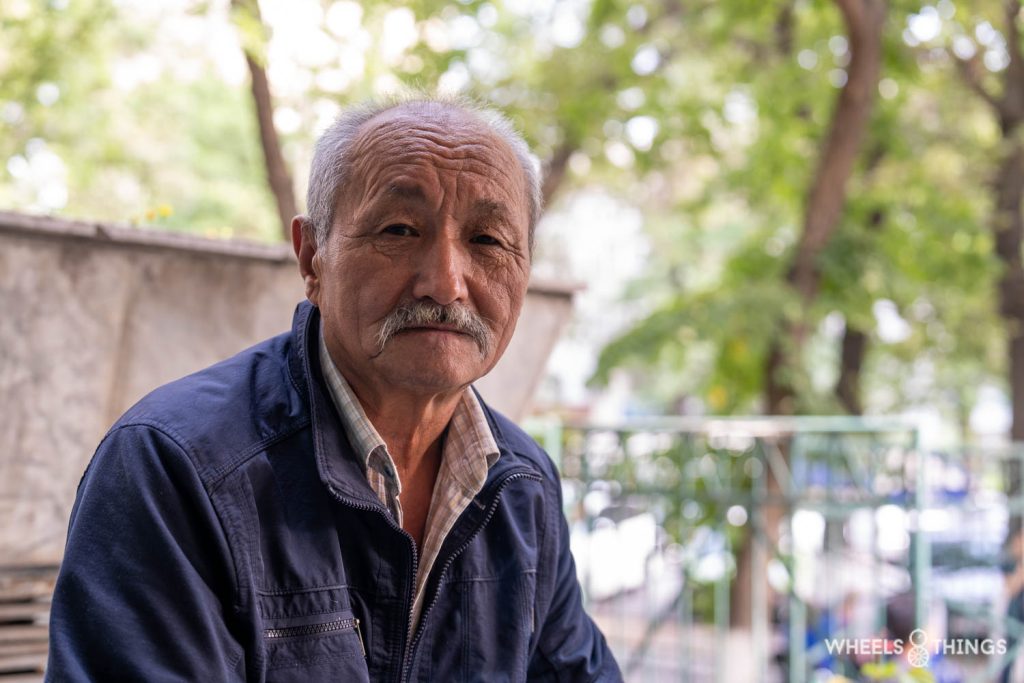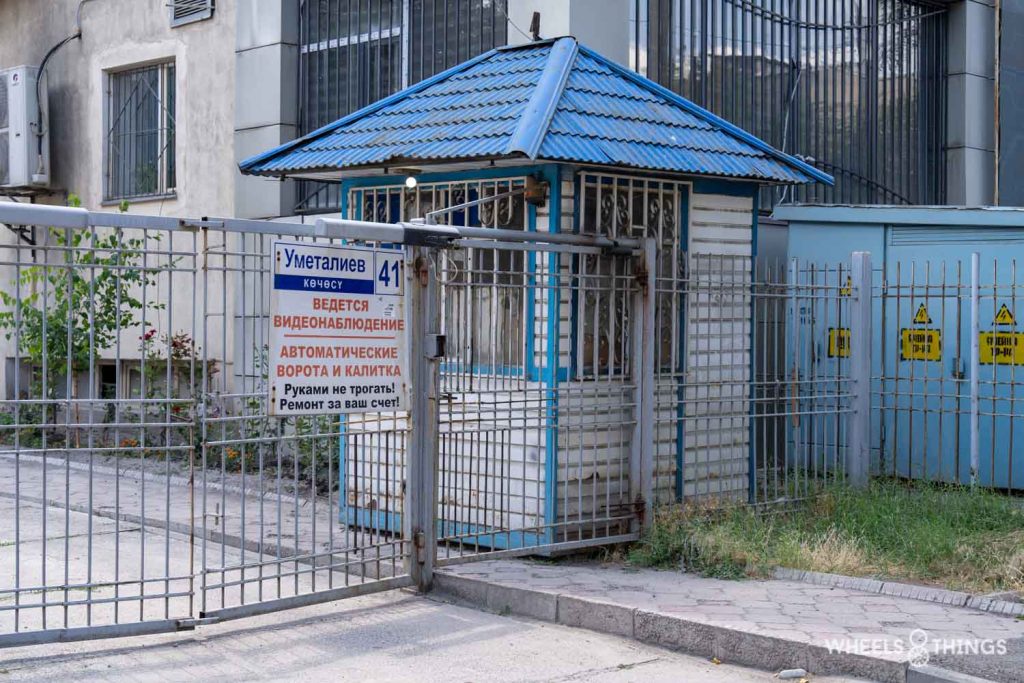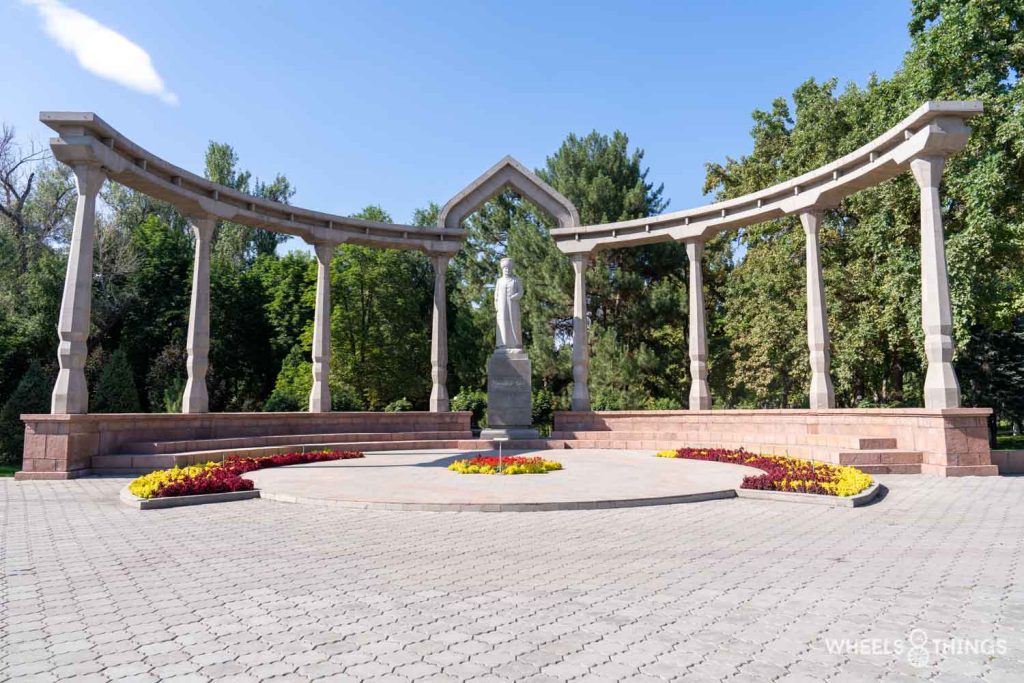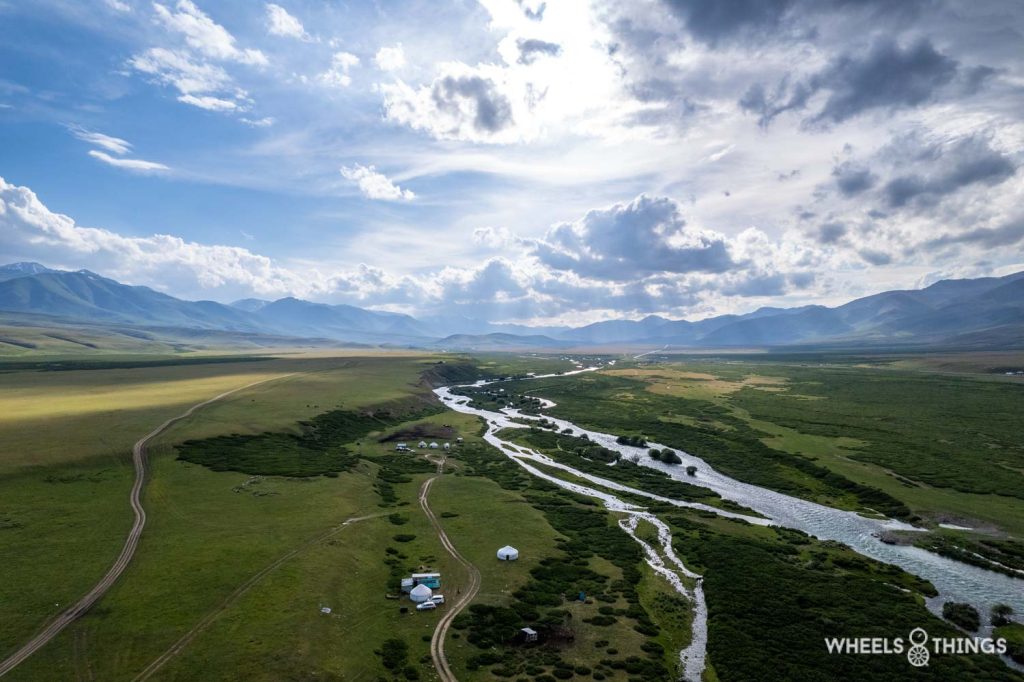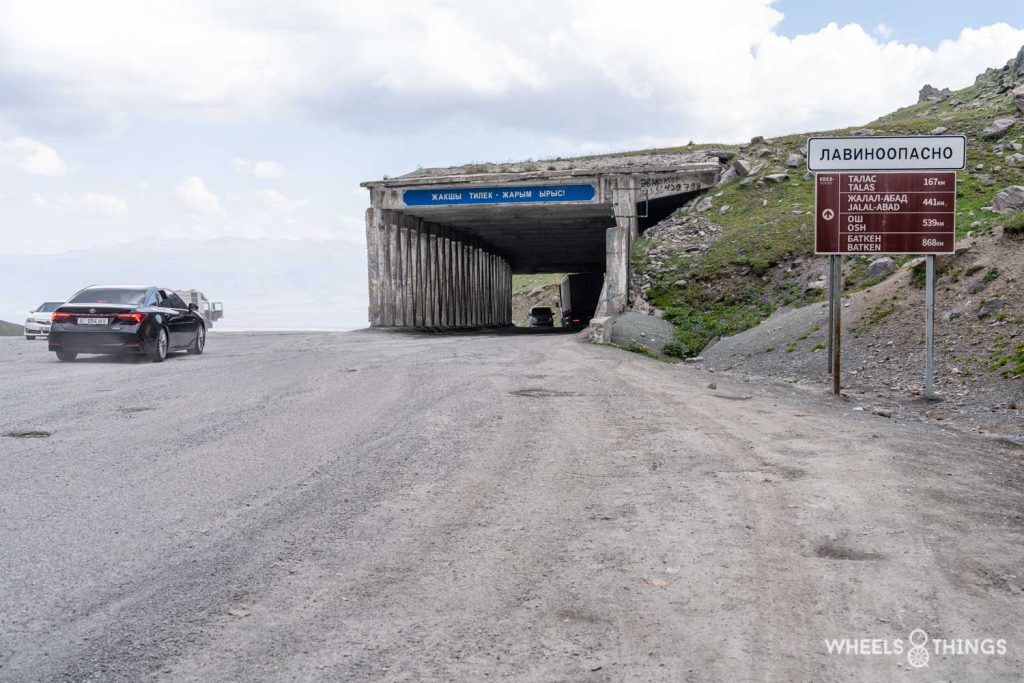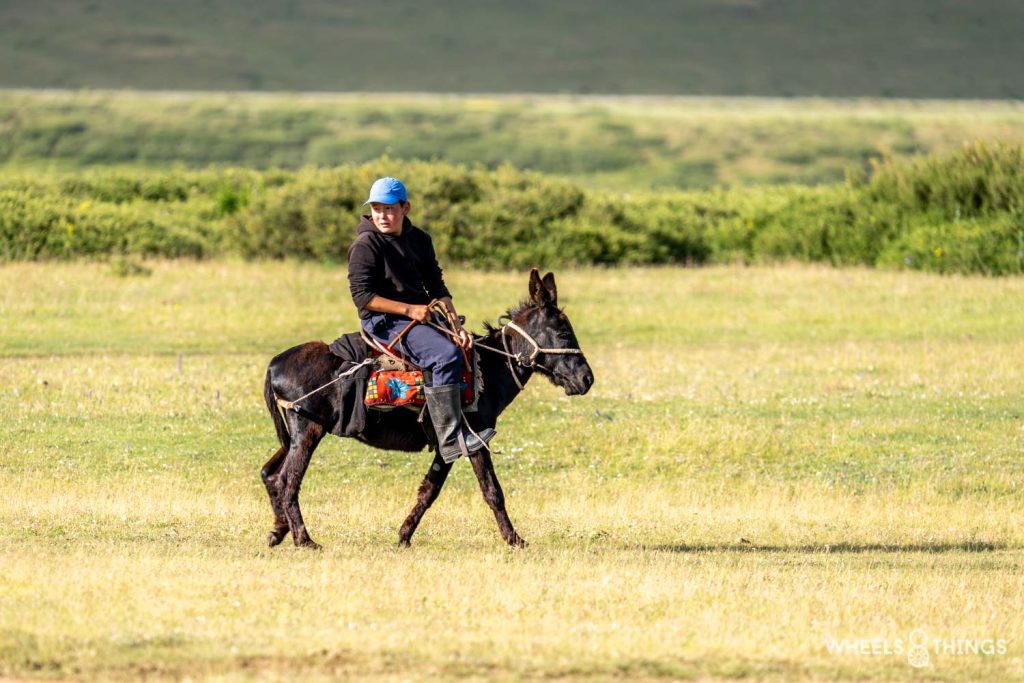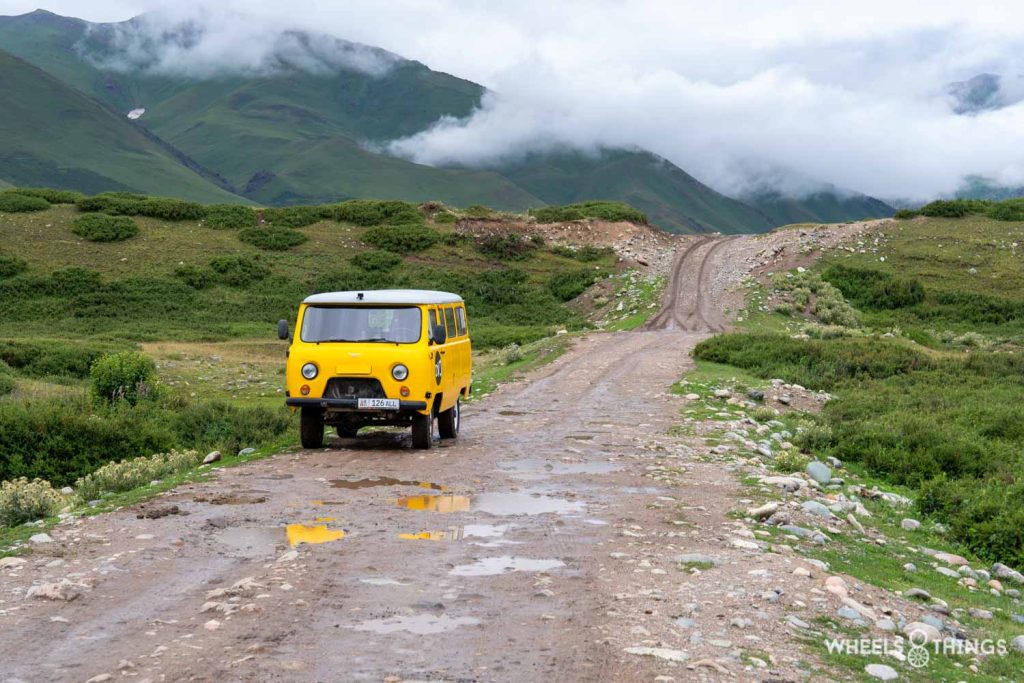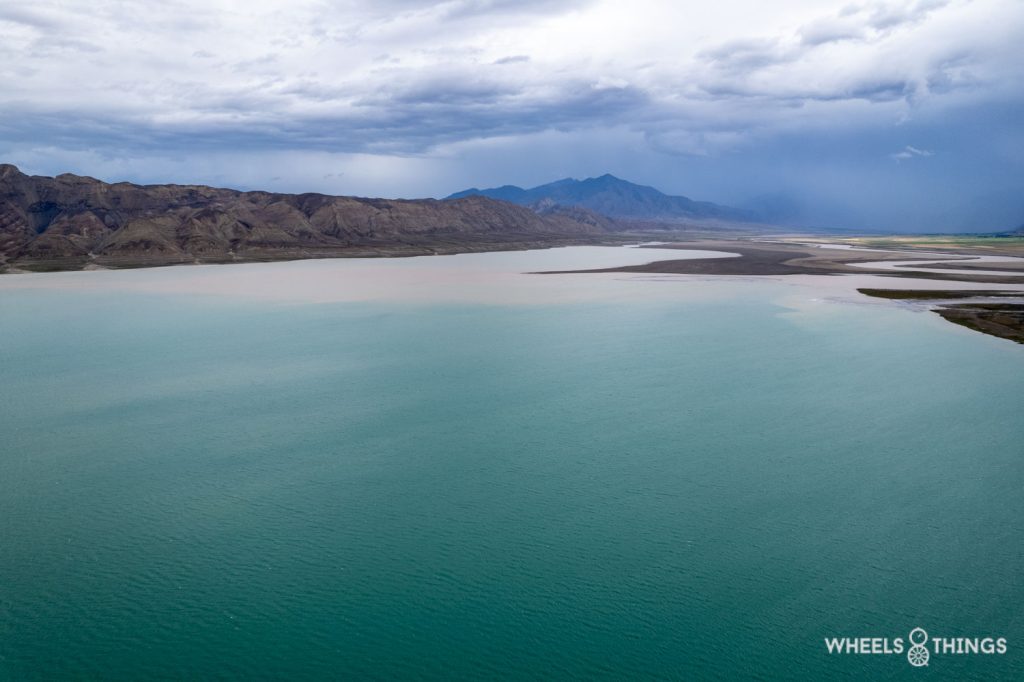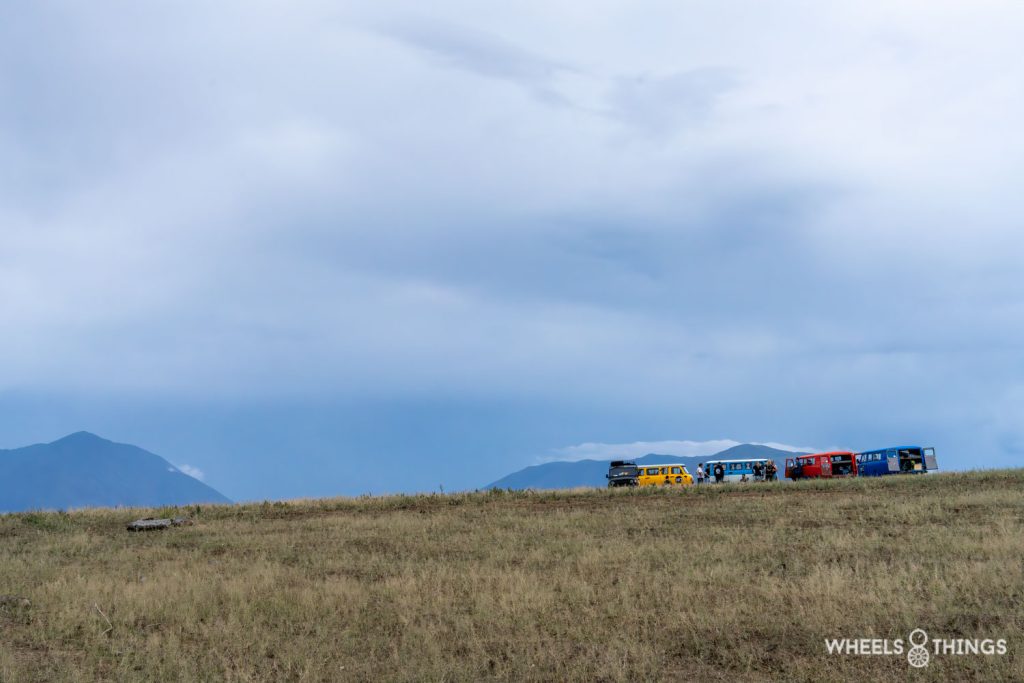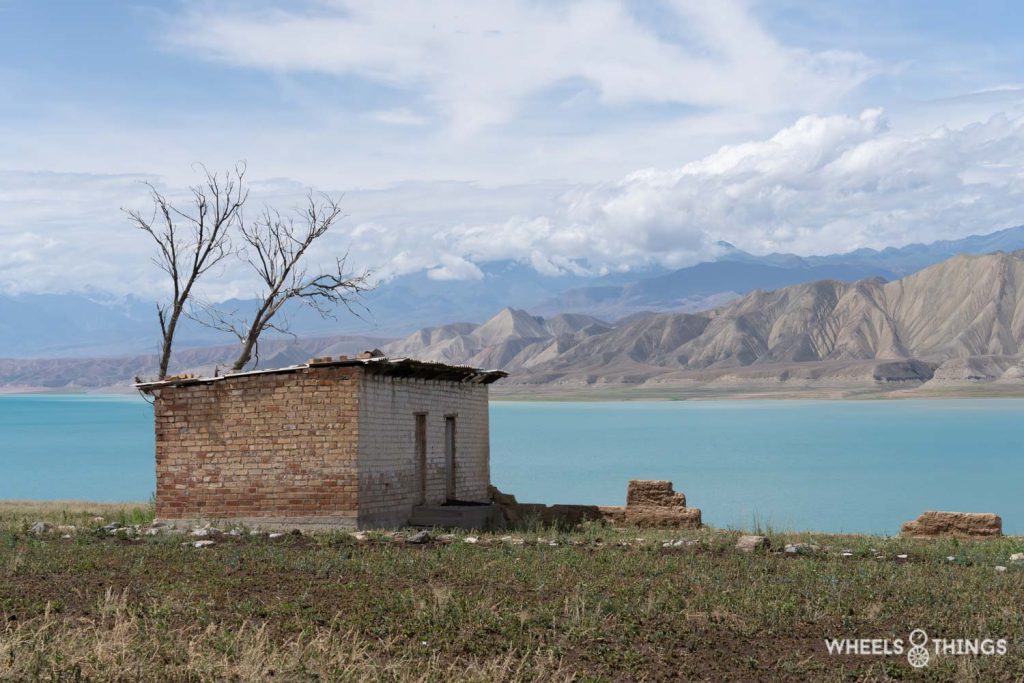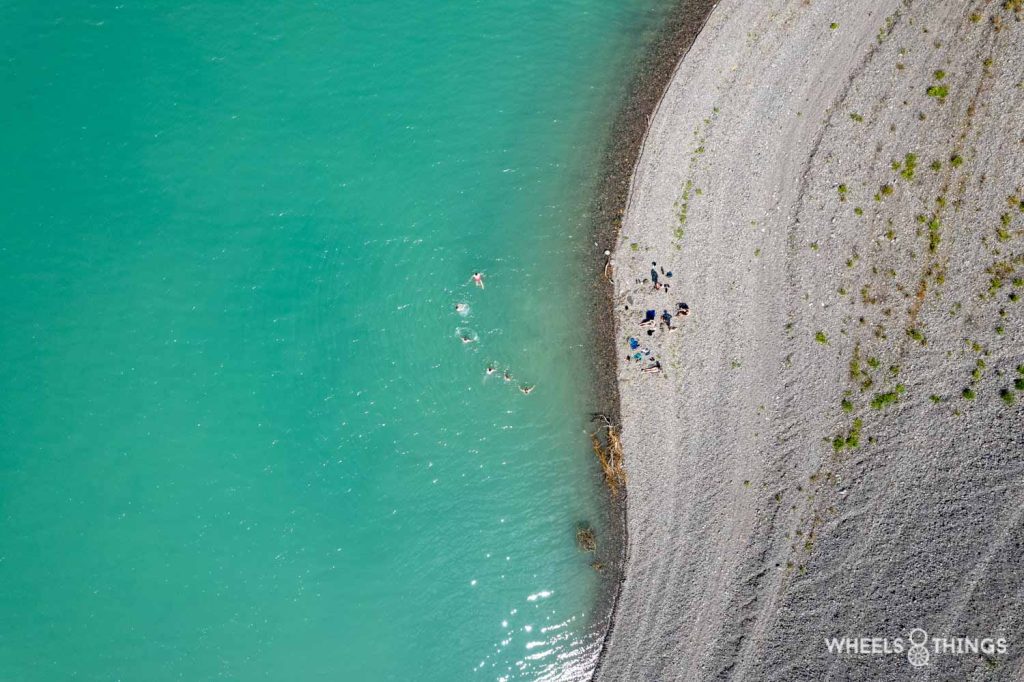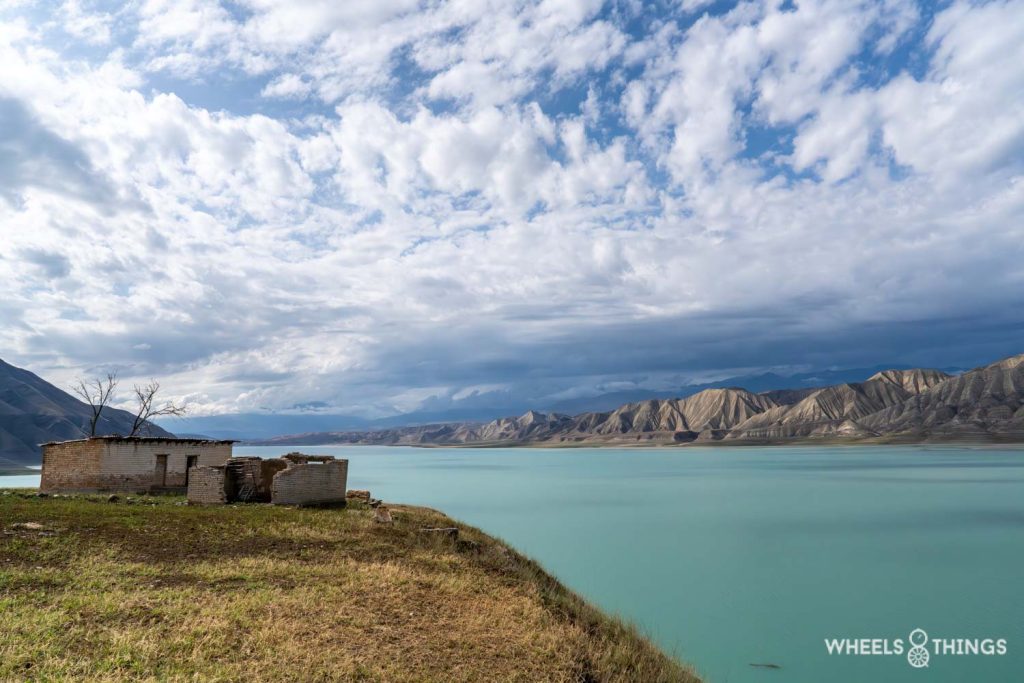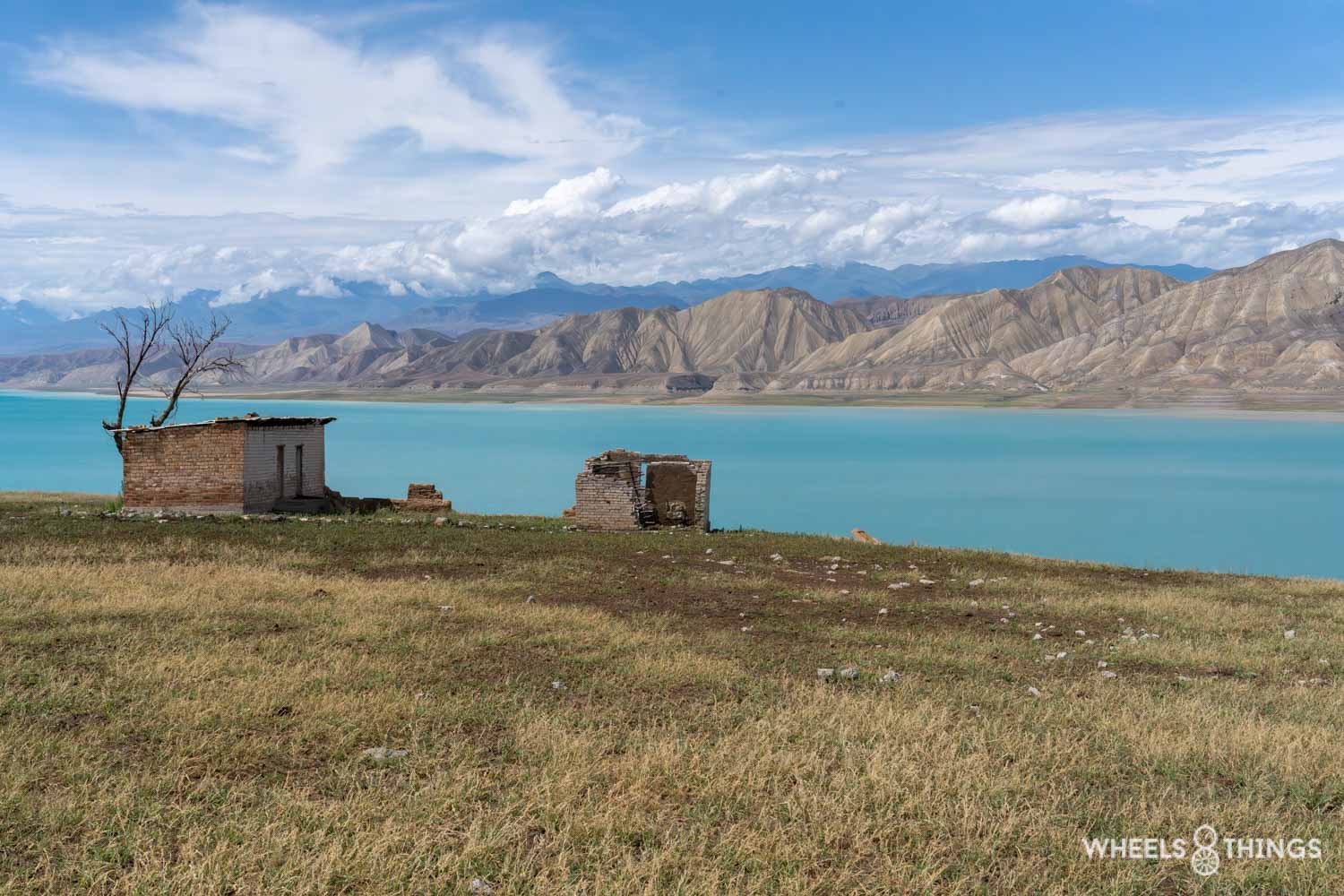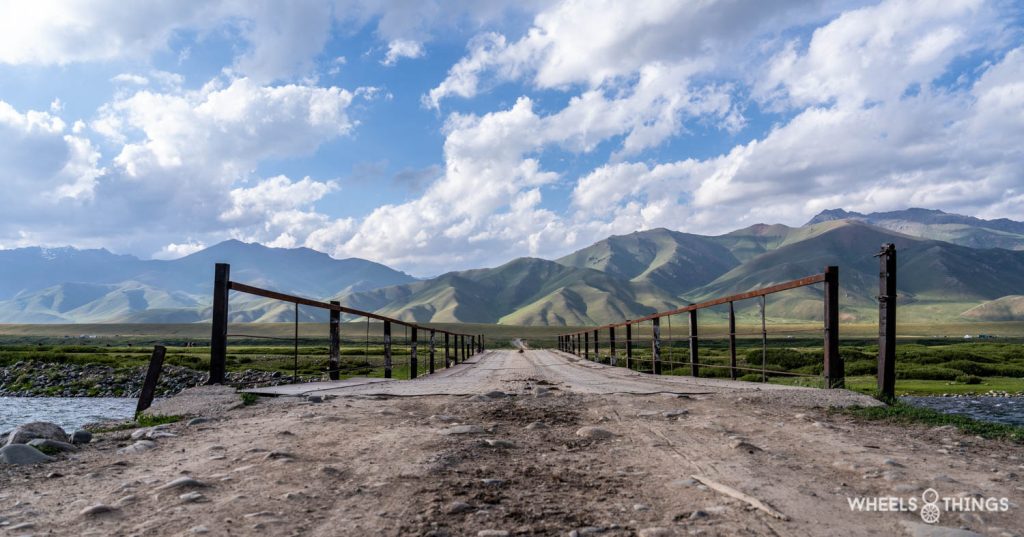
Where are you going? And where is that? And is it safe? Those are just about the most frequently asked questions over the last six months when I told about the road trip I would be taking with Loïc and Dieter in the summer of 2024.
Ok, it is not really well known (yet). According to some sources, it was the least known country on earth in 2015. Meanwhile, things have changed but for many people it still sounds like faraway gistan. And that is completely unjustified, in this report I take you through perhaps one of the most beautiful countries in the world.

When sometime in the summer of 2023 Dieter forwarded a link of The Lost Boys, I was immediately intrigued. Now to get it sold to my wife, as I knew beforehand that this would not be for her. All in all, it wasn’t too bad and we got the green light. The preparations could start.
As you can also see from our blog, we at Wheels-and-things love books. So the first thing I did was buy a book of Kyrgyzstan, and that’s pretty easy because there is only one. Publisher Bradt has a book where you can really find just about everything about the country.

Before you read on, just this, if you expect to read a report on a luxurious trip then you are in for a disappointment. A trip with The Lost Boys stands for adventure and doing what you want, and that’s what we did. Enjoy reading, and a little further on in this first part of four you can also watch a video.
We took off from Charleroi airport and flew with Pegasus over Istanbul where, after a short stopover, we could fly on to Bishkek, the capital of Kyrgyzstan. Kyrgyzstan has a population of around 6.6 million, of which a good million live in the capital. The country is 6.5 times the size of Belgium and over half of its total area is above 3,000 metres.
Friday 5 July – Bishkek

We landed at 4.30 am at Manas airport where you are immediately approached by a gang of slick SIM card salesmen. And yes you need one because calling through your subscription from home could well take the cost of your stay to unprecedented levels. At the airport you pay around 15 euros for a month of unlimited internet, if you can wait a day it will cost you just five euros in the city.
Here’s a first tip: book a hotel in advance because you can really use those few hours of sleep. And choose a small hotel, that way you can already taste some things at breakfast that you may never have eaten before.
Bishkek is a modern city with a large number of statues. Often these date back to the era when Kyrgyzstan was still part of the USSR. In most other former USSR countries, those statues appear to have disappeared. Not in Kyrgyzstan, where there are still a lot of statues of Lenin like this one above at the national museum.
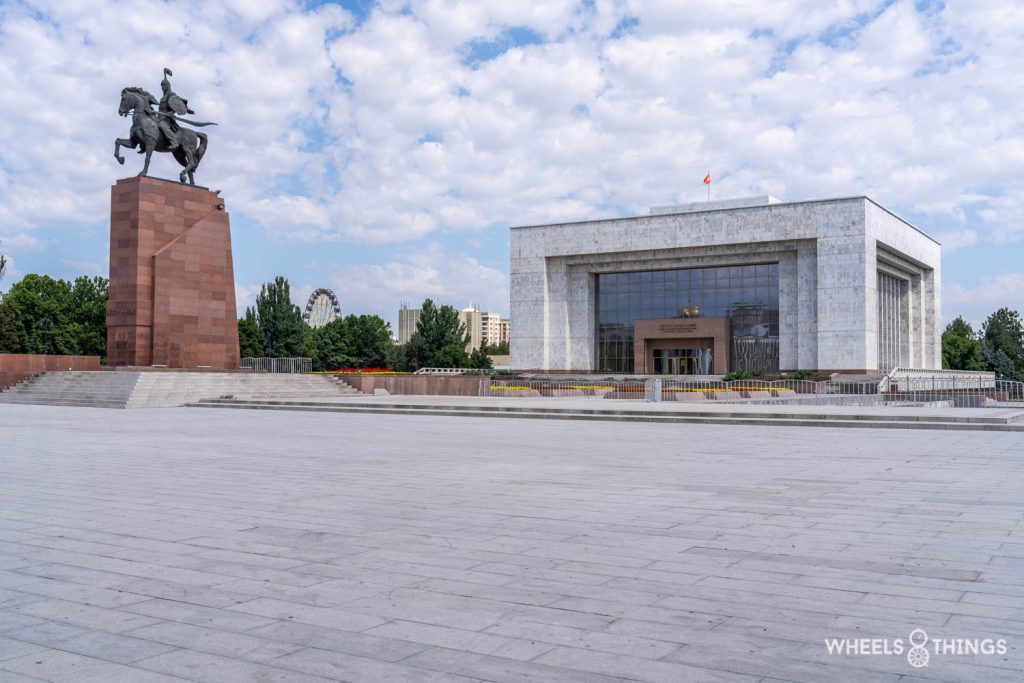
During our road trips, we always try to get to know something of the country. So we easily talk to people, even on the streets. We ask them what it is like to live, work, etc. in their country. Most people we could talk to (as there are very few who speak English) turned out to be happy in their country.
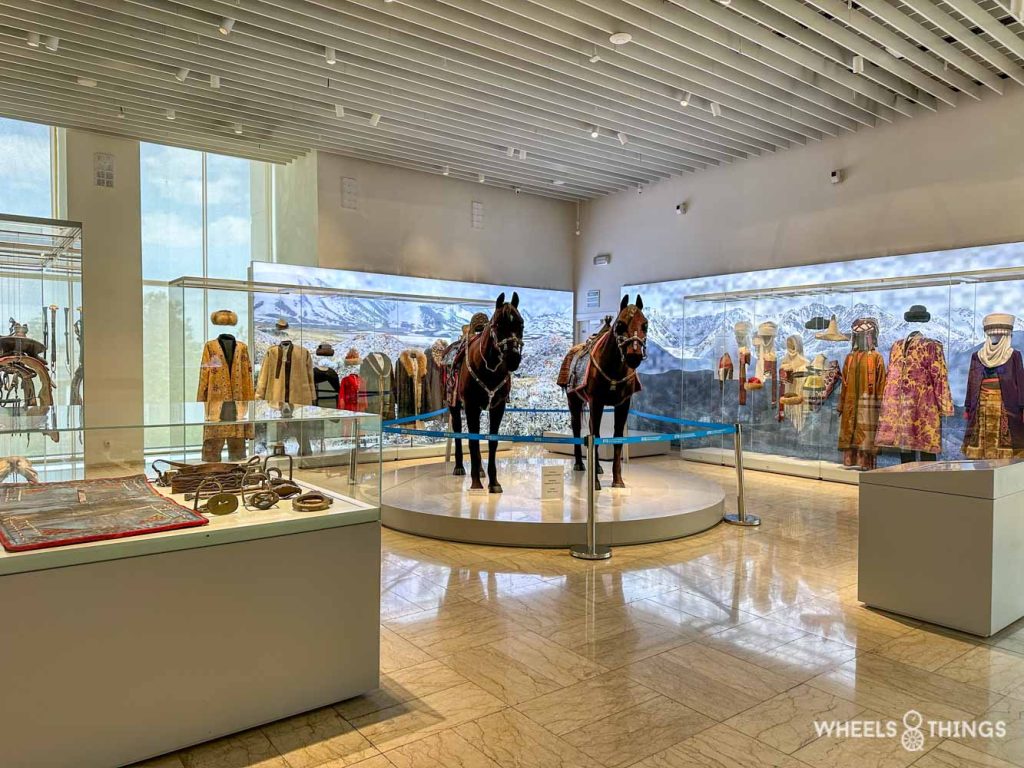
Museums are also invariably on our list; here in Bishkek, the National Museum was an obvious choice. It is a nice open and modernly conceived museum with explanations everywhere in Kyrgyz, Russian and English 😁.
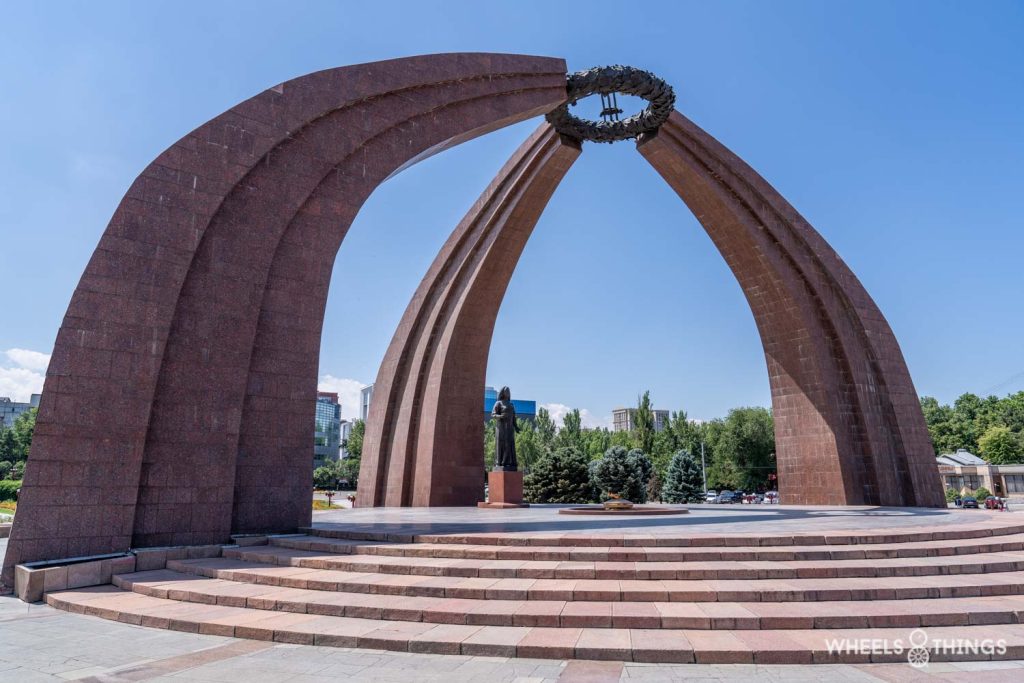
Otherwise, it is a very open city with many squares, monuments, parks and chaotic traffic.

The Victory Monument above was established in 1984 to commemorate the 40th anniversary of the victory over Nazi Germany. It is also where newlywed couples apparently like to have their photos taken.
Osh Bazaar.

Osh Bazaar is the largest semi-covered market in Bishkek, and if you ask us, it should not be missed when visiting the city. The variety of products on offer is huge. It ranges from a T-shirt costing barely 70 cents to a bunch of lungs or other intestines of a bovine.

The market exudes a busy atmosphere but you are left alone as a tourist. Quite a difference from e.g. a bazaar in Marocco. A tip is to go early, when it is rather quiet because by noon it is crowded.

Whenever we go on a road trip, we make sure we don’t lack anything culinary. Maybe the visit to Frunze restaurant was a little over it but it was fun. The first thought as we walked past this place was that it might be way too expensive.

However, with prices of five to 10 euros for a dish, that was not too bad for us. Afterwards, it turned out that we had been in one of the country’s leading restaurants. Of course, if you know that wages here average between 27 and 310 euros a month, not everyone will come here to eat…
After eating delicious food it was slowly time to seek our bed, we stayed at the Navat Hotel where at breakfast all three of us ate things we had never heard of before. So we were able to start the day off right 🙂 .
Saturday 6 July – Bishkek
By the way, due to a mistake on my part, we had to look for another hotel for one night. Actually, by the way, these are things that never create a problem. An hour later, the Damas hotel was booked. Since we had quite a lot of luggage with us, we looked for a taxi, even if it was only for one kilometre. We paid 100 Som for that, equivalent to 1 euro.

We visited Bishkek’s central mosque. In Kyrgyzstan, about 75% of the population adheres to Sunni Islam, 20% are Russian Orthodox and the remaining 5% are Catholic. The mosque was built in Ottoman style and inaugurated in 2018. It can accommodate 9,000 worshippers in the enclosed section and, with the courtyard added, up to 3,300 people in total. The mosque is among the largest in central Asia and well worth a visit.
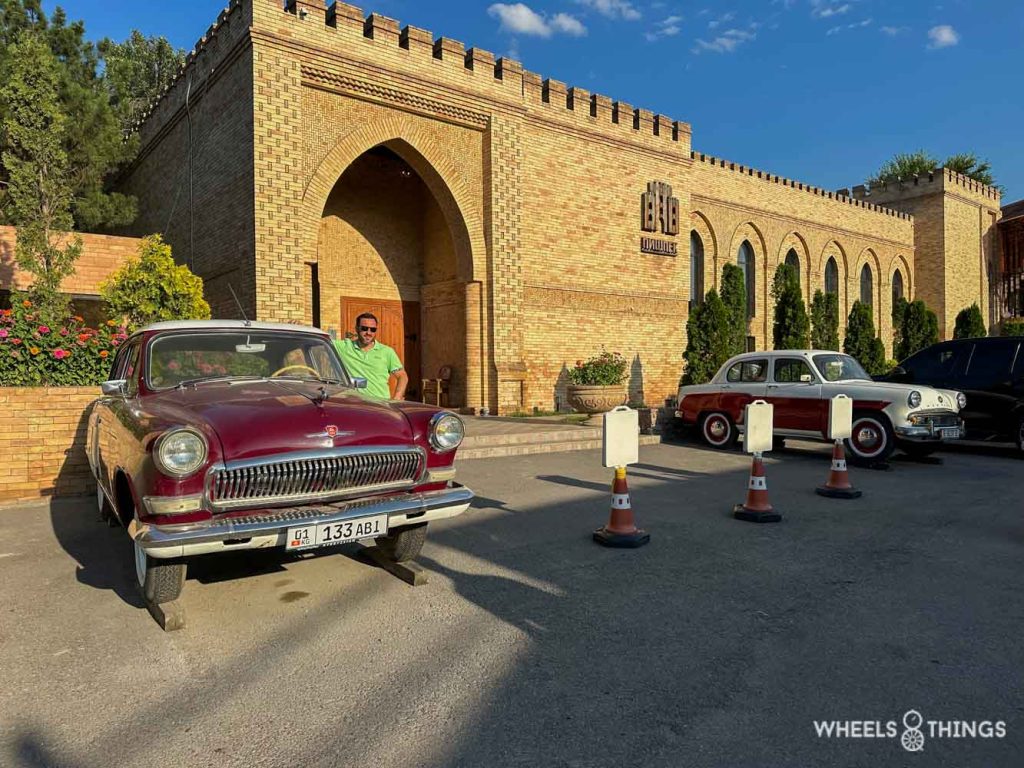
In the evening, it was gathering at Pishpek restaurant near Bishkek’s football stadium for the rally’s kick-off. It was also the first time the whole group came together. Three Belgians (i.e. us) and 18 Dutch. Some of them we had already met at the gathering in Zeewolde. It turned out to be a fun bunch.

The food kept coming, we think there was easily food for 40 people. About the drinking we should perhaps keep quiet, beer and shots of vodka galore 🙈. Fortunately, we held back a bit.
Sunday, July 7 – 185km towards Suusamyr

By noon we were expected at Urmat’s garage, we were there well in time which meant we still had some choice regarding the Bukhankas. Our eye fell on the bright yellow one. After a bit of explanation about the gears and the fuel gauge and speedometer not working, we were ready to hit the road. The niggling gearbox, heavy traffic with Kyrgyz driving like crazy gave minimal excitement.

Naturally, we chose a yellow supermarket to stock up on our first supplies. This evening food was provided but tomorrow morning we had to provide our own breakfast. The drive took between four to five hours, which gave us all time to get to know the Bukhanka. We also crossed a first mountain pass with an altitude of 3140m. The road is littered with serious potholes so the driver really has to keep his head to avoid as many as possible. This is both for the occupants and the mechanics.

Around 6pm we reached the campsite, à room with a view you might say. The vast untouchedness of the land will impress us time and again over the next two weeks.
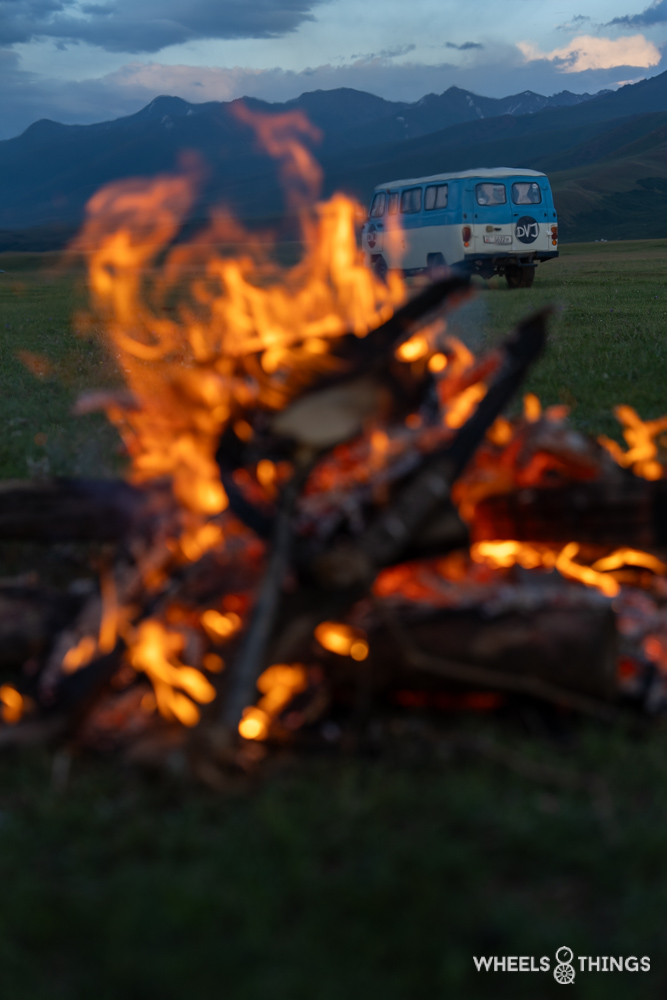
Quickly set up the tent while it was still light. Afterwards, a campfire was quickly built, which proved to be really necessary. Not just to prepare the food but mainly for warmth, because it was getting colder quickly. The food was ok but no more than that, the meat could have cooked for a few more hours… By 11 p.m., most of us were asleep (or rather in our sleeping bags). Around 1.30 am the first thunderstorm broke out, and several more followed that night. All in all, we slept reasonably well.
Monday, July 8 – 157km towards Toktogul

We were up at six, I had been awake for a while because I heard cows grazing right next to our tent. Loïc had made coffee and that combined with the fresh bread we had bought yesterday made for a good start to the day. It was off towards Toktogul where we went back to camp. Along the way, we enjoyed the views and stopped here and there to take a photo.

Whenever I asked people if I could take a portrait, they always happily posed like this old man passing by on his donkey.

At noon, we passed a small village and since we needed to eat something anyway, we stopped to look for something. A table with two benches invited us in, and after a nod from the lady above, we took a seat.
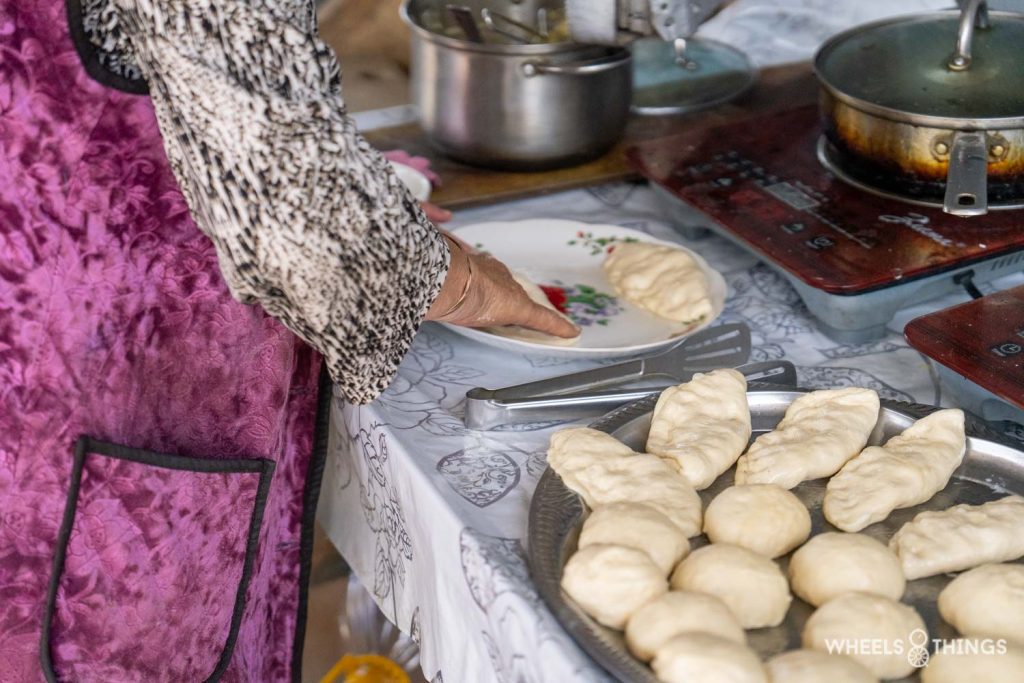
We were treated to delicious Hoshany, a Uyghur dish consisting of a dough filled with pieces of lamb, onion and spices. It is fried in oil and tastes exceptionally delicious. We also tasted a variant with only cubes of potato in it. Both were delicious for ridiculously little money.
Did I mention the people’s hospitality? This is at an unprecedented level for us Westerners. For instance, after a heavy rain we stopped at a roadside teahouse/restaurant. Once seated, they came and asked what we wanted to eat, actually we just wanted something to drink. They only had tea, if you know I don’t like tea…. Anyway, so they brought tea with a typical bread and a jar of raspberry coulis to go with it.

When we asked for the bill, we were not allowed to pay, even after insisting on our part, they did not want anything. On the contrary, they still came off with Kumis. This drink is actually fermented horse’s milk and is the national drink in Kyrgyzstan. We had already turned it down a few times but now we felt we really couldn’t resist. Special, that’s the least you can say although it was not as bad as we had first thought.

After conquering the Ala Bel Pass (3175m), we arrived at our campsite. Here we were again treated to phenomenal views. The Toktogul reservoir is 284 square km in size and 215 metres deep on average. It is the largest reservoir in Kyrgyzstan and was created in 1973 by closing the Naryn River with a dam. This flooded the Ketmen-Tyubinskaya valley.
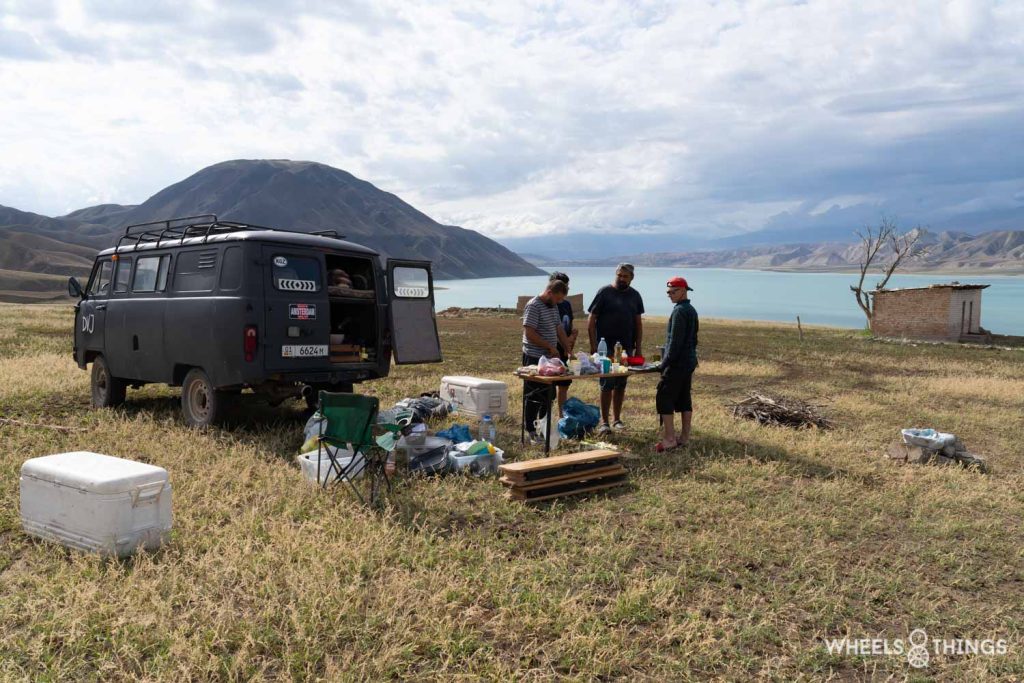
Dinner was provided almost every day by the Urmat team. Sasha, Alex and Aidar turned out to be centipedes who worked on the cars in the morning and prepared our food in the evening.

Sander and Tessa’s Lada Niva had starting problems, so Alex removes the starter and repairs it on the spot. Pretty handy to have a mechanic along.
Above, you can see a short video of the first part of our road trip.
If you enjoyed this first report, take a quick look at part two.








